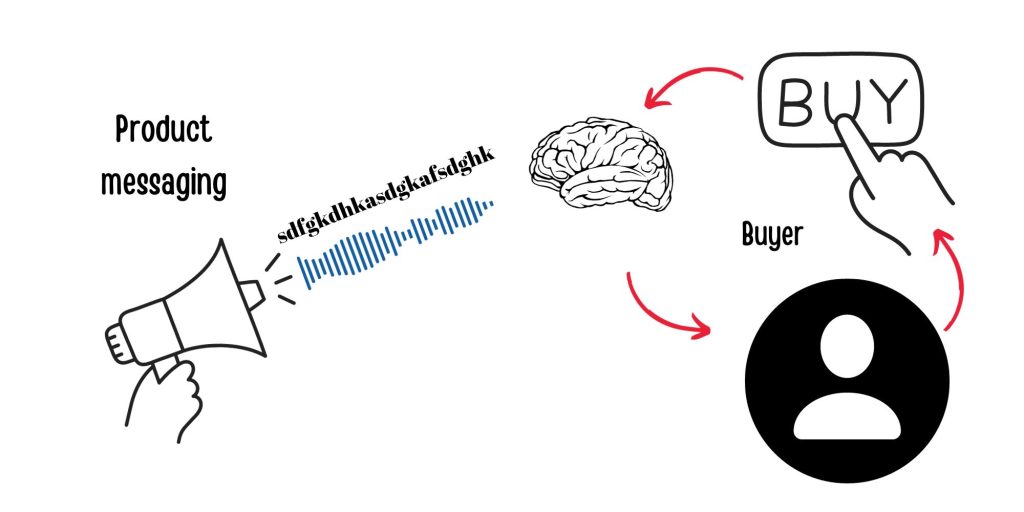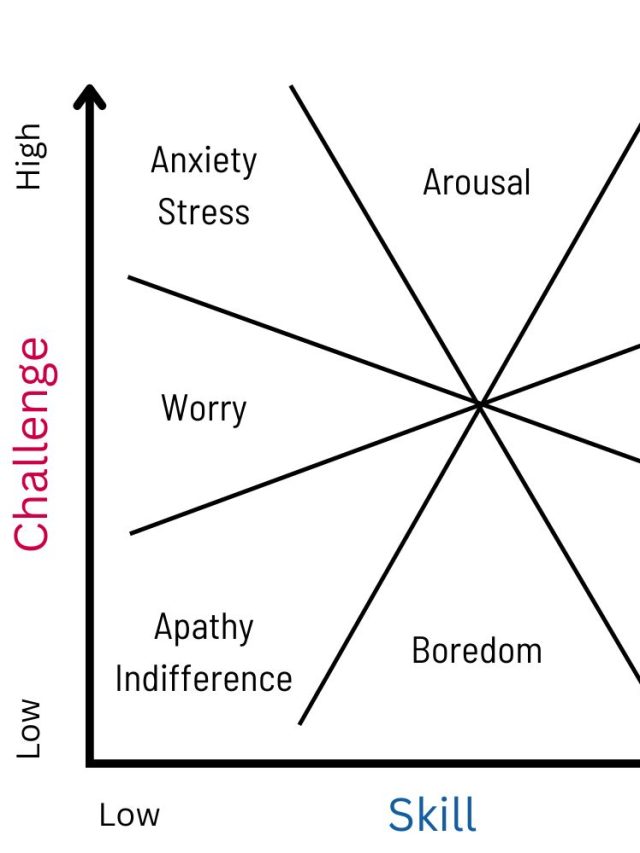Each buyer can have a specific mindset while buying. That mindset describes their general perception of all available products at the moment of buying. The mindsets emerge from their buying histories, personalities, and life experiences. Understanding them will help you refine your product messaging so it aligns with what the buyer wants.
Chances are you work in marketing, content, and sales, or you are working on your product’s vision. So you are familiar with messaging. But for those new to the field, messaging is simply how you communicate the value of your product to your potential buyer. In a way, messaging is about using visuals and words to convince the buyer that the product’s benefits will positively impact their lives.

So, the methodology I propose here is to keep the buyer in the center and identify their consumer behavior using any method you like. Gain any information you like and map it to one or many of the mindsets below. And then follow the messaging guidelines according to the mindset. The reason I personally look at buyer mindsets and not personality or personas is that a mindset captures their lifestyle, needs, and thought patterns in one easy user story. Your product’s messaging must align with the buyer’s mindset for it to have a potential for conversion.
One mindset at a time, walk in your buyer’s shoes – empathize so you know what your buyer wants.
- 1. The Scarcity mindset
- 2. The Frontier mindset
- 3. The Prediction mindset
- 4. The Path-dependency mindset
- 5. The Safety mindset
- 6. The Growth mindset
- 7. The Healing mindset
- 8. The Cancel mindset
- 9. The Rebel mindset
- 10. The Uncertainty-reduction mindset
- 11. The Busy/Efficiency mindset
- Next steps in your product messaging journey
- Personal note
- Visual summary
1. The Scarcity mindset
With the scarcity mindset, you are likely to make decisions based on wanting something that is rare or short in supply. You are also likely to make impulse decisions like buying things in bulk when there is little money or you are running out of resources. A small overarching feature of this mindset is – “I should buy it because, just in case….” A maladaptive version of this is hoarding.
Messaging opportunities:
- Focus on the value of having something before it runs out.
- Show it is possible to run out of something you assumed is abundant.
- Show how having a surplus is the smart choice during a crisis.
- Use the tried and tested limited-time or limited-stock messaging.
2. The Frontier mindset
The frontier mindset is one where you want the newest tech, cutting-edge, innovative solutions. You are likely to take risks to try things out first, even when there aren’t enough reviews.
Messaging opportunities:
- Praise cutting-edge developments and how they are better
- Nudge the buyer to imagine a life with the new, improved, novel product
- Appeal to the buyer’s identity by making identity about being at the front-row seat of development
3. The Prediction mindset
The prediction mindset is partly driven by anxiety and the need for cognition personality trait (the need to prefer structure and seek explanations for uncertainty in life). You’d likely make decisions based on what you predict will happen. Financial decisions like investments, health decisions, buying future-proof goods, etc., are likely based on what you predict in life. The driving force is – “I might need this because this will happen.”
Messaging opportunities:
- Tell the buyer, “You knew it all along.”
- Tell the buyer, “You spoke.” and “We listened.”
- Highlight how future-proof features.
- Speak of how certain the benefits are long-term.
4. The Path-dependency mindset
Path dependency is an economic concept in which people do things just because they were done a particular way. This mindset is all about choosing the familiar and comfort-zone options and resisting change. It’s driven by feeling secure that you are making choices based on what works and taking no risks. You would not change the microwave even if it is outdated if it works. You would choose new products only when they don’t break your long-standing familiar habits.
Messaging opportunities:
- Highlight how the buyer doesn’t have to change anything about their life.
- Use words like “It’s the same old thing you trust and love, just better.”
- If it’s a new product, focus on the brand loyalty your buyer has had instead of showing that the product is new.
5. The Safety mindset
The safety mindset is all about choosing safety and comfort, but it is primarily driven by fear and anxiety. You would choose products or make everyday decisions based on the safest, no-risk option available – so familiar restaurants, safest travel options, fixed deposits over stock market investments, etc. The safety mindset is also about decisions that keep you safe from potential threats, so you’d likely value health, protecting yourself, feeling prepared, etc., a lot.
Messaging opportunities:
- Show reductions in risk like “protect your assets against a market crash” and “our refined oil keeps your family safe and healthy.”
- Tell the buyer how they are better prepared for uncertainty with your product – “this app will give you all new updates about what’s happening around you.”
- Highlight how many successes your brand has had, like “450,000 passengers safely transported in spaceships.”
6. The Growth mindset
The growth mindset is one where you seek improvements in every area of life. All your decisions are about getting something better – your next phone should be better, and your career must go up steadily. You’d value learning from mistakes and acquiring new skills.
Messaging opportunities:
- Visualize future happiness and lifestyle upgrades.
- Do the traditional contrast of “old” products failing vs. “new” products making life easy.
- Sell the idea of the product being responsible for the buyer’s progress in their career and achieving higher milestones.
7. The Healing mindset
The healing mindset is about reacting to your past pains. The focus of your decision is to avoid a pain you’ve experienced and take measures to recover from it. So, your relationships are defined by avoiding what hurt you. Your purchases are about changing lifestyles so you don’t make the same mistakes you did in the past. It’s all about growing wiser and better from past problems.
Messaging opportunities:
- Focus on the buyer not having to live with existing pain.
- Highlight recovery from medical or mental health problems.
- Visualize healthier relationships and happiness alongside the product.
Growth mindset and Healing mindset are similar but opposite. Growth is about acquiring something to make the future better. Healing is about avoiding a past pain to make the future better.
8. The Cancel mindset
Like the cancel culture, your choices are driven by morals, and the focus of your decision is boycotting or dismissing things you don’t agree with instead of choosing something you prefer. So, someone who doesn’t like Android phones will simply eliminate all brands and choose an iPhone. Essentially, given many options, you would start with “not this, not that” instead of “I might like this”. It’s a mindset that operates on eliminating options instead of scanning for preferred options.
Messaging opportunities:
- Show the buyer knows what they want – “you know what you don’t want, now you are at the right place.”
- Highlight the buyer could be tired of searching through mediocrity, and now they can settle for something better.
- Literally show eliminated options.
9. The Rebel mindset
The rebel mindset is a simple mindset – it is a reaction to what is popular and the norm. You are likely to choose unpopular or offbeat products, listen to niche music, find odd hobbies, or even be a trendsetter. You are likely to judge popular things as mediocre and find something special and rare. Those with a rebel mindset want to disconnect from past traditions.
Messaging opportunities:
- Use imagery of rebellion according to the buyer’s culture.
- Highlight how the buyer stands out from the norm who made worse choices. The rebel should feel smarter than the rest.
- Use words that highlight something unfair and how the product makes things fair – “Don’t waste money on old prestigious products; get the same value at 1/10th the price with some new tech.”
- Sell: Unique and valuable features over established and expensive.
10. The Uncertainty-reduction mindset
The uncertainty-reduction mindset is there in all of us to a degree because the brain gets uncomfortable with uncertainty. One of its purposes is to seek clarity and order during chaos. Uncertainty-reduction is about needing clarity and early information. For example, your choices about watching movies and finding restaurants will depend on reviews or references. You’d likely watch all trailers first and wait for public opinion before taking a risk, even if the risk is small, like wasting 2 hours on a bad movie. It’s all about gaining as much information as possible to know what you are getting into.
Messaging opportunities:
- Anything and everything that reduces uncertainty – more information, less suspicion.
- Assurances that say, “You are the master of your product.”
- Show social proof and review snippets.
The prediction mindset is very similar but quite the opposite and almost always seen along with uncertainty-reduction as a conflict because both are rooted in anxiety. Uncertainty reduction is more fear-based, and prediction is more control-based. So uncertainty leads to seeking knowledge, and prediction leads to making guesses about the world.
11. The Busy/Efficiency mindset
A busy mindset buyer’s first and foremost concern is earning more “time”. Be it productivity, business travel, or home-running, a busy buyer wants things that increase the amount of time they have. They want to improve efficiency and reduce everyday complexity. For example, an optimizing mindset buyer with many electronic devices would care more about a single charger that manages multiple devices. The same buyer would prefer an app that has more functionality than having 10 different apps for each function. The busy mindset values simplicity as well and asks the question – Does the product quickly do what I need it to do?
Messaging opportunities:
- Appeal to the “think less, do more” aspects of your product.
- Value buyer productivity and quick but accurate solutions.
- Sell the product as a “companion” while they are busy.
Next steps in your product messaging journey
Understand how buyer satisfaction depends on the complexity of the product. Details here. Quick review chart below.

Personal note
In my experience with pharmaceuticals, consumer electronics, educational products, and mental health services, the context is very important. A buyer mindset is fairly long-term, but it is not devoid of context. Discounts, marketing hype, celebrity endorsement, financial restraints, and desperation change the whole picture. For example, a person walking into a store with only 1 hour to spare does not have the luxury to shop around and find the best “product-mindset fit.” They will choose the best of what they have in front of them. Another common change in buying decisions is how often an ad is seen. A constantly repeated ad can be sticky and be more “available” in a buyer’s mind, making it more “buy-worthy”.
Visual summary


Hey! Thank you for reading; hope you enjoyed the article. I run Cognition Today to paint a holistic picture of psychology. My content here is referenced and featured in NY Times, Forbes, CNET, Entrepreneur, Lifehacker, about 15 books, academic courses, and 100s of research papers.
I’m a full-time psychology SME consultant and I work part-time with Myelin, an EdTech company. I’m also currently an overtime impostor in the AI industry. I’m attempting (mostly failing) to solve AI’s contextual awareness problem from the cognitive perspective.
I’ve studied at NIMHANS Bangalore (positive psychology), Savitribai Phule Pune University (clinical psychology), Fergusson College (BA psych), and affiliated with IIM Ahmedabad (marketing psychology).
I’m based in Pune, India. Love Sci-fi, horror media; Love rock, metal, synthwave, and K-pop music; can’t whistle; can play 2 guitars at a time.










